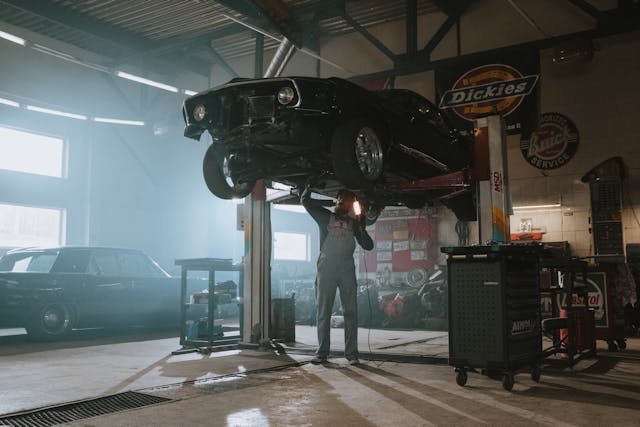Ultimate Guide to Vehicle Inspection During a Car Insurance Claim
Introduction
Accidents happen. When they do, your car insurance is supposed to be your safety net. But before any repairs can be covered, your insurance company needs to inspect your vehicle. This isn’t just red tape—it’s a vital part of verifying the damage and making sure everything is legit.
So, what exactly is a vehicle inspection during a claim, and why does it matter so much? Let’s break it down in this detailed, human-friendly guide.
Understanding the Car Insurance Claim Process
What Triggers a Vehicle Inspection?
Whenever you file a car insurance claim—whether it’s for an accident, theft, fire, or even natural disaster damage—a vehicle inspection is typically triggered. The insurance company needs visual proof of the damage before approving your claim.
Role of the Insurance Company
The insurer sends a surveyor or assessor to inspect the vehicle. This person acts as the company’s eyes and ears, verifying your claim’s validity, estimating repair costs, and checking for any inconsistencies.
Types of Vehicle Inspections
1. Pre-Insurance Inspection
Before a new policy is issued (especially for used cars), a basic inspection is done to check the vehicle’s current condition.
2. Post-Accident Inspection
This is the most common. After you report an accident, your insurer examines the extent of the damage.
3. Spot Inspection
Surprise! Sometimes insurers conduct random inspections to keep things honest, particularly if they suspect fraud.
Step-by-Step Process of Vehicle Inspection During a Claim
Step 1: Registering the Claim
You inform the insurer via phone, app, or website. They generate a claim ID for tracking.
Step 2: Scheduling the Inspection
A date and time are set—either at a garage, your home, or virtually through photos/videos.
Step 3: Physical Assessment by Surveyor
The inspector reviews the damages, takes photos, and notes key details.
Step 4: Estimation of Damages
Based on the inspection, a repair cost is calculated.
Step 5: Approval and Repair
If everything checks out, the insurer gives a green light for repairs, either through cashless garages or reimbursement.
Documents Required for Vehicle Inspection
Be ready with:
-
Vehicle Registration Certificate (RC)
-
Valid Insurance Policy
-
Driving License
-
First Information Report (FIR) – in case of theft or major accident
-
Pictures of the damaged car (if remote)
What Do Inspectors Look For?
-
Visible Damage – Dents, cracks, broken lights, scratches
-
Structural Damage – Frame bends or chassis issues
-
Pre-existing Issues – Previous wear and tear
-
Signs of Tampering – Fake damage or old dents claimed as new
⏰ What If You Miss the Inspection?
Delaying or missing your scheduled inspection can delay claim approval or even lead to rejection. If you miss it, contact your insurer immediately to reschedule.
On-Site vs. Remote Inspection
On-Site Inspection
-
✅ More thorough
-
❌ Time-consuming
Remote Inspection
-
✅ Faster, done via app
-
❌ May miss subtle damage
Use remote only if your insurer allows it and damage is minimal.
Role of Surveyors and Assessors
These are trained professionals hired (or employed) by insurance companies. Their job is to objectively assess damages, prevent fraud, and ensure fair compensation.
They aren’t out to get you—but they are there to be thorough.
Tips to Prepare for a Vehicle Inspection
-
Wash Your Car: Dirt can hide minor dents.
-
Organize Documents: Have physical and digital copies.
-
Stay Transparent: Trying to sneak in old damage will only backfire.
⚠️ Common Mistakes to Avoid
-
Late Claim Reporting: Time limits matter.
-
Hiding Facts: Full disclosure is always better.
-
Repairing Before Inspection: Never do it—it may void your claim.
⏳ Timeline – How Long Does the Process Take?
-
Inspection: Usually within 24-48 hours of claim
-
Approval: 2-5 days, depending on complexity
-
Repair: Depends on parts availability and damage level
Myths About Vehicle Inspections
-
“They Always Reject Claims”
Nope. If your claim is genuine, you have nothing to fear. -
“You Can Hide Minor Scratches”
Inspectors are trained to spot inconsistencies. It’s not worth the risk.
How to Track Your Claim and Inspection Status
-
Insurer’s Website or Mobile App
-
SMS or Email Updates
-
Direct Call to Customer Service
Stay in the loop to avoid delays.
✅ Conclusion
Vehicle inspections during a car insurance claim might seem like a hassle, but they’re an essential step to ensure fairness for both you and your insurer. Being prepared, honest, and responsive can make the process smooth and quick. After all, the sooner the inspection is done, the sooner your vehicle gets back on the road.
❓FAQs
1. Can I claim insurance without inspection?
No. Inspection is mandatory to verify damage before claim approval.
2. How long after an accident should I get my vehicle inspected?
Ideally within 24-48 hours of filing your claim.
3. Do minor scratches require inspection?
Yes, even small damages need documentation for claim processing.
4. Can I be present during the inspection?
Yes, and it’s actually helpful if you’re there to explain the incident.
5. What happens if my vehicle is totaled?
The inspector will evaluate its market value and the insurer may offer a total loss settlement.
Please don’t forget to leave a review.


